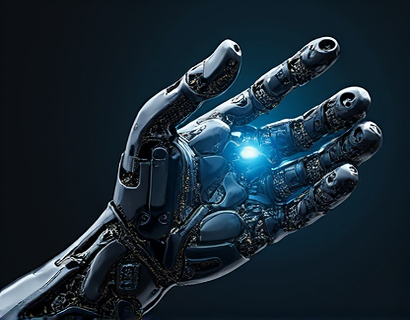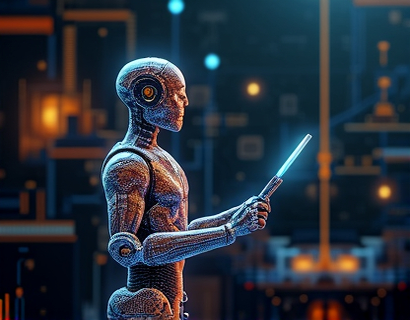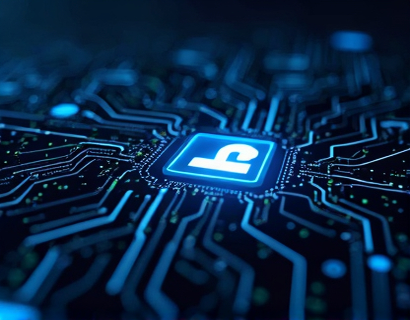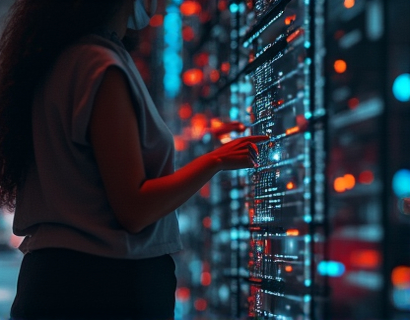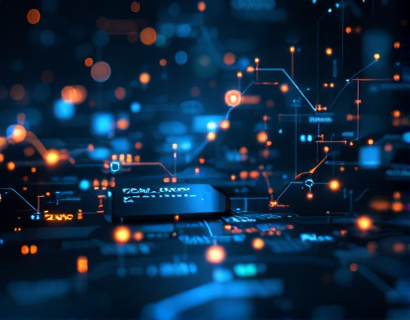Unlocking Enhanced Digital Experiences: Harnessing the Power of Crypto and AI for Next-Gen Ucosystem Growth
The digital landscape is undergoing a profound transformation, driven by the convergence of blockchain technology and artificial intelligence. This synergy is not just a trend but a fundamental shift that promises to redefine how we interact online, manage digital identities, and engage with services. For tech innovators and early adopters, understanding and leveraging this combination can unlock unprecedented opportunities for growth and innovation. This article delves into the transformative potential of integrating blockchain and AI to enhance digital experiences and drive robust growth in the evolving tech ecosystem.
Understanding Blockchain and AI
Blockchain technology, at its core, is a decentralized ledger that ensures transparency, security, and immutability. It has revolutionized industries by providing a trustless environment where transactions can occur without intermediaries. On the other hand, artificial intelligence encompasses a range of technologies that enable machines to perform tasks that traditionally required human intelligence, such as learning, reasoning, and self-correction. When combined, these technologies create a powerful toolkit for building secure, efficient, and intelligent digital systems.
Enhancing Security and Trust
One of the most significant benefits of integrating blockchain and AI is the enhancement of security and trust in digital interactions. Blockchain's inherent properties make it an ideal foundation for secure data management. Smart contracts, self-executing contracts with the terms directly written into code, can automate and enforce agreements without the need for intermediaries. AI can further bolster this by detecting and mitigating anomalies in real-time, ensuring that the system remains robust against potential threats. This dual approach not only protects user data but also builds a higher level of trust among users, which is crucial for the adoption and success of any digital platform.
Personalized User Experiences
AI's strength lies in its ability to analyze vast amounts of data to provide personalized experiences. By leveraging machine learning algorithms, platforms can understand user preferences, behaviors, and patterns to tailor content and services accordingly. When combined with blockchain, this personalization can be achieved securely and privately. For instance, user data can be stored on a blockchain, ensuring that individuals have control over their information and can choose what data to share and with whom. This not only enhances the user experience but also complies with stringent data protection regulations.
Decentralized Identity Management
Identity verification and management are critical components of the digital ecosystem. Traditional methods often involve centralized systems that are vulnerable to breaches and misuse. Blockchain offers a decentralized solution where users can create and manage their digital identities securely. AI can enhance this by providing advanced biometric verification and behavioral analysis to ensure that only authorized users access their accounts. This combination not only streamlines the authentication process but also empowers users with greater control over their digital identities.
Fractional Ownership and Tokenization
The tokenization of assets through blockchain allows for fractional ownership, making high-value assets accessible to a broader audience. AI can optimize this process by analyzing market trends, predicting asset values, and automating trading strategies. For example, in the real estate sector, blockchain can represent property ownership in tokens, while AI can assess market conditions to determine optimal sale or rental prices. This synergy opens up new investment opportunities and increases liquidity, benefiting both investors and platforms.
Supply Chain Transparency and Efficiency
Supply chains are complex and often opaque, leading to inefficiencies and trust issues. Blockchain provides a transparent and immutable record of transactions, from production to delivery. AI can further optimize this by predicting demand, optimizing routes, and automating inventory management. Together, these technologies ensure that supply chains are not only transparent but also efficient and resilient. This is particularly crucial in industries like logistics and manufacturing, where timely and accurate data is essential for success.
Content Creation and Monetization
The digital content landscape is saturated, making it challenging for creators to stand out and monetize their work. Blockchain offers a way to verify ownership and provenance of digital content, ensuring that creators receive fair compensation. AI can assist in content recommendation algorithms, helping creators reach the right audience. By combining these technologies, content creators can build sustainable careers, and platforms can offer more equitable and transparent monetization models.
Building a Robust Ecosystem
To fully harness the potential of blockchain and AI, it is essential to build a robust ecosystem that fosters innovation and collaboration. This ecosystem should include developers, researchers, businesses, and users who can contribute to the development and adoption of these technologies. Initiatives like open-source projects, hackathons, and community-driven forums can accelerate the growth of this ecosystem, driving continuous improvement and new applications.
Challenges and Considerations
While the potential is vast, integrating blockchain and AI also comes with challenges. Scalability remains a significant issue for blockchain, as many networks struggle to handle high transaction volumes efficiently. AI models require substantial computational resources and data, raising concerns about energy consumption and environmental impact. Additionally, regulatory frameworks are still evolving, and ensuring compliance is crucial. Addressing these challenges through research, innovation, and collaboration is essential for the sustainable growth of this ecosystem.
Future Prospects
The future of the digital landscape is bright, with blockchain and AI set to play pivotal roles. As these technologies mature, we can expect more seamless integration, leading to even more sophisticated and user-friendly applications. The convergence of these technologies will not only enhance individual digital experiences but also drive broader societal benefits, such as improved governance, healthcare, and education. For tech innovators and early adopters, embracing this synergy is not just an option but a necessity to stay competitive and relevant in the rapidly evolving tech landscape.
In conclusion, the combination of blockchain and AI offers a transformative path forward for the digital ecosystem. By enhancing security, personalizing user experiences, enabling decentralized identity management, and optimizing various industries, these technologies pave the way for a more secure, efficient, and inclusive digital world. Tech innovators and early adopters who embrace this synergy will be at the forefront of the next digital revolution, driving growth and innovation in ways we are only beginning to imagine.




